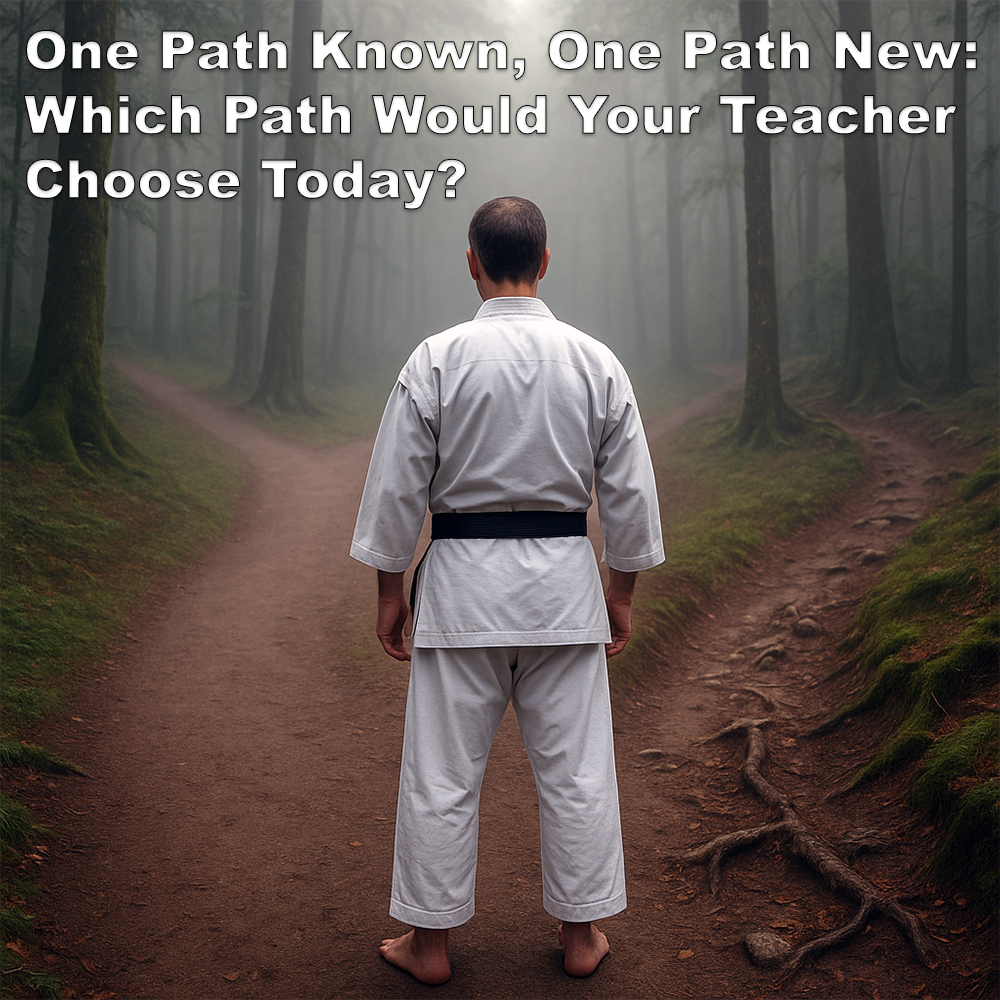
One Path Known, One Path New: Which Path Would Your Teacher Choose Today?
Posted by ADAM CARTER on MAY 27, 2025

One Path Known, One Path New: Which Path Would Your Teacher Choose Today?
(Approx 2 minute 10 second read)
The martial arts are great, aren’t they? So much diversity, so many differences – steeped in rich traditions and varied styles.
While the pursuit of proficiency and personal growth is what most of us strive for, it’s not uncommon to encounter practitioners who show a certain stubbornness when it comes to embracing something different.
Perhaps one reason for this resistance might be the deep reverence for tradition. These arts have been passed down through generations, with each style carrying its own heritage and philosophy.
For many, adhering to the traditional techniques, rituals, and values is a way of honoring that lineage. Embracing something different can feel like a betrayal – like diluting the purity of what they’ve inherited.
But things get lost along the way too. Sometimes techniques are misunderstood, or subtly changed over time through miscommunication – until the original intent is barely recognizable.
A recent comment I read summed it up well: someone said, “I practice an old, traditional style, and I will not change it.”
Now, change for its own sake is rarely wise. But when we’re presented with new information, better methods, or clearer reasons for doing something differently – shouldn’t we at least be open to looking? After all, leeches were once considered cutting-edge medicine. Not so much now.
Another reason for this reluctance is the fear of weakening your expertise. Years of training build a sense of pride and confidence. To question that – or try something new – might feel like undermining everything you’ve worked for. That fear of losing hard-earned proficiency can keep people stuck, unwilling to take a step into the unknown.
We’re all creatures of habit, and martial artists are no exception. Over time, we become deeply familiar with our chosen style – its techniques, strategies, and mindset. That familiarity becomes a source of comfort. Trying something different means starting again, facing new challenges, and leaving behind what feels safe.
I’ve seen this play out first-hand.
As an example, in recent articles I’ve written about step-kumite and the use of hikite, many of the responses have fiercely defended these practices – sometimes almost to the death. And quite frankly, many of the arguments were, quite simply, wrong.
Even when challenged by evidence, by science, by biomechanics – some people still refuse to reconsider. Why? Because for many, their martial art isn’t just something they do. It’s who they are.
It shapes their identity. It provides purpose, self-discipline, and confidence. To question or change even a small part of it can feel like pulling at a thread in the fabric of who they’ve become. And that’s not easy.
But being open-minded is essential if you truly want to advance your understanding. Don’t stand still. Evolve. That’s what the pioneers did. They didn’t cling to the past out of fear. They moved forward – questioning, testing, and improving.
“It is impossible for a man to learn what he thinks he already knows.” – Epictetus
In the end, it’s not about abandoning tradition. It’s about making sure that what you hold onto still makes sense – and still works for you.
Respect the past, but don’t be imprisoned by it.
Written by Adam Carter
